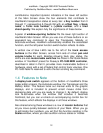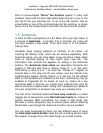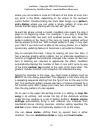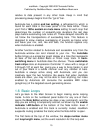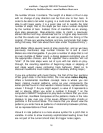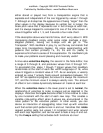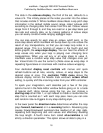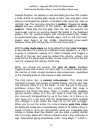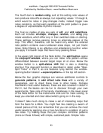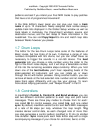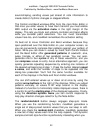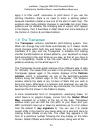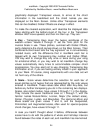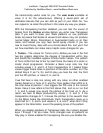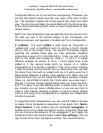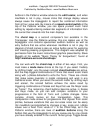maxWerk - Copyright 2000-2007 Amanda Pehlke
Published by RedMoon Music - www.RedMoon-Music.com
20
The
fourth
item is random retrig, and at this setting note values of
zero
produce note-offs
as always, but
repeating
values 1
through
8,
which would tie notes in
play-changes
mode,
instead
trigger
new
notes
randomly,
so that each
repetition
of the pitch
pattern
is given
a
degree
of
unpredictable
rhythmic
interest.
The final six
modes
of play are sets of alt1 and alt2
notefilter
s.
Each set includes
all-steps
,
changes
, random, and retrig play
mode
variations,
which differ only in their switched state on
starting.
These
settings
remove
passing tones on
alternate
passes of the
loop. This effect,
therefore,
can be
heard
only when the
entered
note
pattern
contains
even-numbered
scale steps, not just triadic
tones. Note filtering is an effective and
entertaining
function
when
you apply it to busier loops that have many passing tones.
In the
upper
right
margin
of the Note Editor, the
split
button
opens
the
step-split
window
, where you can make note
pattern
entries
differentiated
between
several
target
loops all at once. Below the
window
button
is a
split-status
LED that is also a disabling
shortcut.
The
step-split
function
is
described
in detail
under
"Step-
Split Tricks" in Part II, as are
features
lying
behind
the window-
opening
button
labeled
<-expand-pattern->
in the top left section.
Below the four
graphic
displays are various
additional
controls
to
generate
patterns
, to
add
offset
note
lines
with a variety of
parameters,
and to direct these lines to
other
tracks. Perhaps
maxWerk's
most useful
features,
these are also
covered
in detail in
Part II, but the basics can be fun to discover
through
your own
experiments.
Take note of the handy
checkboxes
in the lower panel
of the Note Editor for the
metronome
click and for track soloing, to
keep you
oriented
and clear
about
what's going on in the loop.
It
doesn't
take much doing to make a set of
interesting
loops that
form
the basis for a Werk. You might feel like
creating
a swarm of
crazed
pianos at first, but
remember
that you can achieve the most
useful results by applying one or two
functions
to a
pattern
of just a
few notes. Try making loops that pair complex
controller
patterns
(more
on these follows) with simple,
sustained
pads. Simpler note



